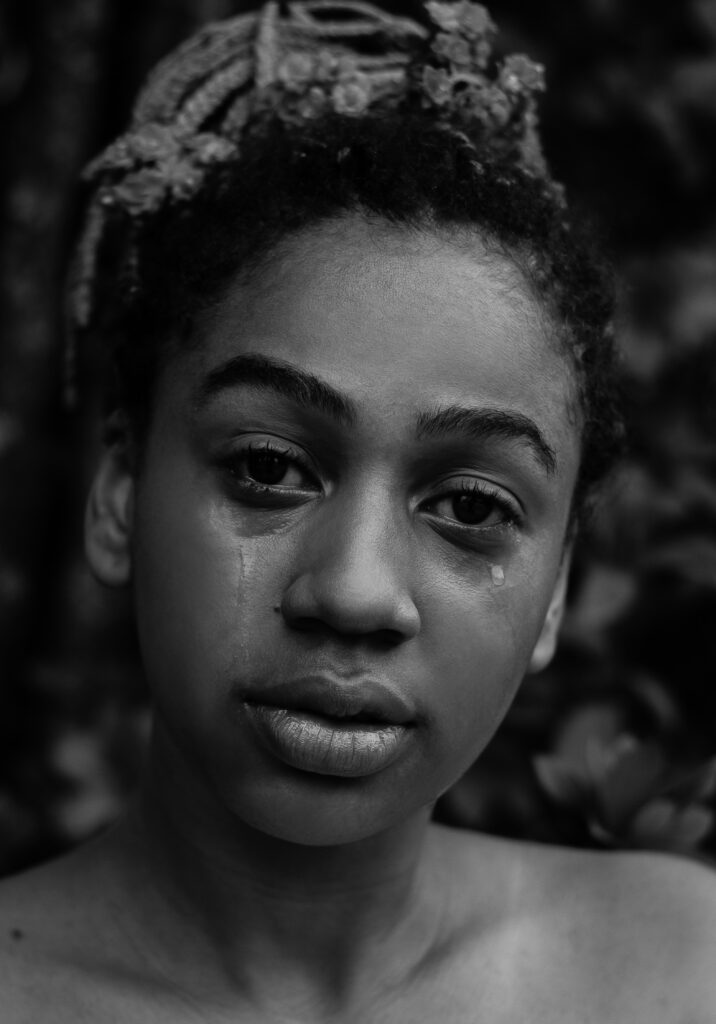Emotions are an integral part of the human experience, and women, in particular, have been stereotypically associated with heightened emotional expression. However, the notion that the tears of women are merely a sign of vulnerability or weakness is an outdated and misguided perspective. Our societies have often witnessed the power and impact of the emotional cries of women. This article explores the significance of women’s emotional expression and how it has catalysed positive change in various spheres.
A Shift in Perception
Historically, women’s emotions have been dismissed or undermined and often categorised as irrational. For years, this has typically caused them to feel guilty, for fear of being seen as manipulative. However, this perception is changing somewhat, as society recognizes that openly showing emotions can be effective in alerting and uprooting serious underlying issues. Men are encouraged to utilise this powerful characteristic in dealing with their own issues too, but a topic for another time. Women, with their ability to express empathy, compassion, and vulnerability, often bring their unique perspective to social and political issues. Instead of viewing tears as a sign of weakness, let’s see them as a symbol of potential change, strength, resilience and sometimes, a cry for help.
The Power of Empathy
Women have always played a pivotal role in encouraging empathy and compassion within communities. When faced with societal injustices or human suffering, the general outcry from women and their persistence serve as a powerful catalyst for change. This can add much needed depth and expose the vilest of situations as they truly are – causing many to identify with victims in the process. Whether it is protesting against abuse, agendas that target children, or speaking out against societal prejudices, their emotional response ignites empathy in others and compels action. The cries of women remind us of our shared humanity.
Breaking Chains and Encouraging Dialogue
More and more, women have been coming together to share unpleasant personal incidents they had kept quiet about, for fear of having to take the blame for the experience. This has been instrumental in challenging systems and encouraging open dialogue. By shedding light on personal experiences, including stories of general abuse, discrimination, sexual harassment, or injustice, women have initiated transformative conversations. Their tears have acted as a call to action, inspiring individuals and communities to confront deep-rooted issues and work towards creating a better society.
Political Influence
In the realm of politics, female politicians are often able to connect with citizens on a profound level. Their compassion, ability to connect others with sensitive issues and general determination, usually rally support – reshaping policies and systems. Whether it be championing causes related to education, healthcare, or social welfare, female politicians use this gift to harness their emotions to drive positive transformation.
The Role of Media
In an age where media coverage has a significant impact on public opinion, crying women have garnered attention and compelled action. The media’s portrayal of emotional moments involving women has shed light on critical issues, frequently resulting in increased awareness and support. Through television interviews, documentaries, and social media platforms, tears have become a symbol of urgency, demanding justice and change.
Women in the Bible
There are various biblical examples of women whose compassion resulted in dramatic transformations. One great example is Queen Esther: In the Book of Esther, the Jewish woman Esther rose to power and ruled over Persia. She risked her life by going to her husband, the king, without being summoned, as was the custom then. This was against the law. However, when she learnt of a conspiracy to exterminate the Jewish people, they were saved from this plot thanks to her bravery and love for her people. “And Esther spake yet again before the king, and fell down at his feet, and besought him with tears to put away the mischief of Haman the Agagite, and his device that he had devised against the Jews”. Esther 8:3
Another, found in Luke 7:36-39 speaks of Mary (a sinful woman), Martha’s sister and the brother of Lazarus. She owns a priceless object – namely an alabaster jar of scented ointment. She is overcome by Jesus’ presence and stands behind him crying. Using her hair to wipe away her tears from His feet would have been deemed improper in the context of the culture. The lesson here is the woman’s unorthodox actions reveal her enduring guilt, humility, and love for Jesus. She exhibits extreme vulnerability by giving away the most priceless possession she has in an effort to ask for forgiveness and a fresh start. Her sobs and the ointment come to represent her repentance, purification, and dedication.
Let us embrace the power of female emotions with a bit more understanding and move beyond the stereotypes associated with showing emotions. When women cry, a nation listens because their way of expressing their emotions can serve as a catalyst for change, encouraging empathy, dialogue, influence and hope. By embracing and valuing women’s emotions, we can create a more compassionate and equitable society, where the collective power of empathy is harnessed to tackle any challenges that lie ahead. This superpower is indeed a blessing, as it teaches all how we can collectivey use it to conquer any issue and bring about help, hope, healing and happiness to many, with God’s help.
God bless!

